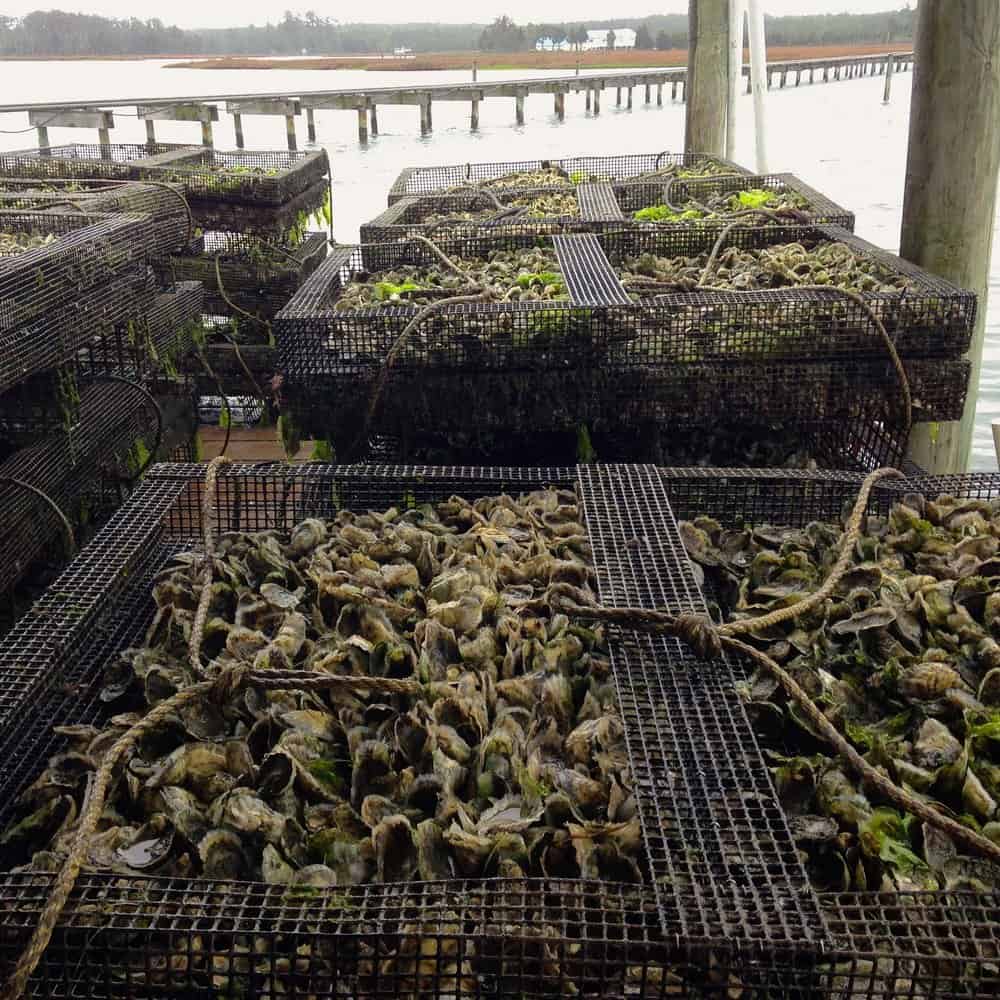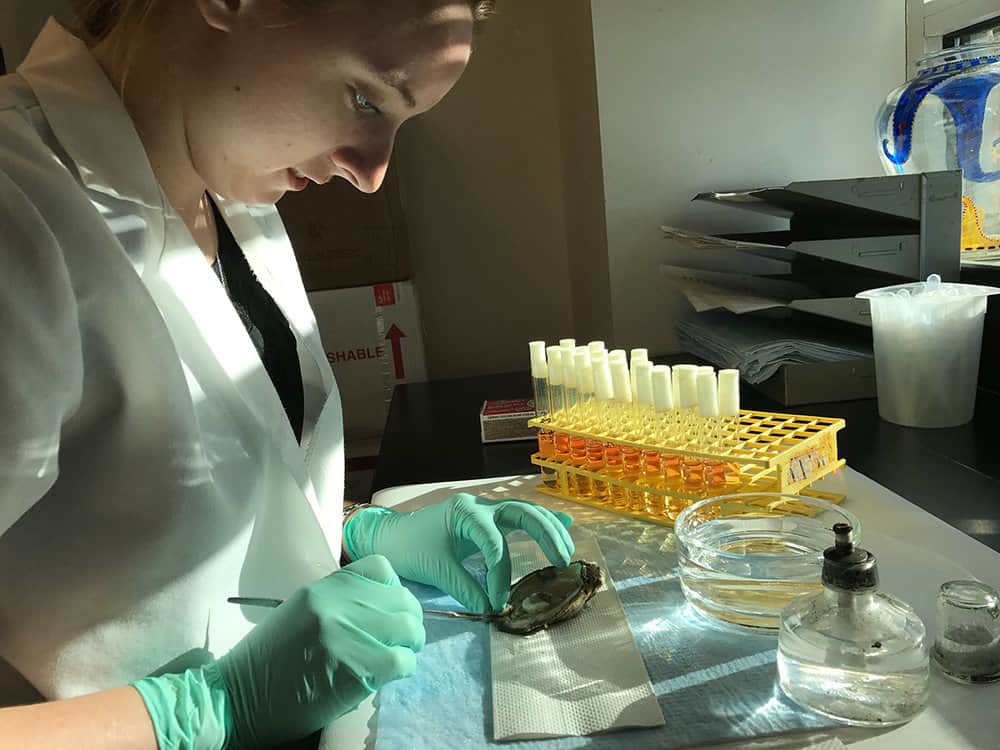To keep wild oysters healthy, a recent study finds that farmed oysters are just what the (marine) doctor ordered.
Dr. Ryan Carnegie, a professor at the Virginia Institute of Marine Science (VIMS), co-authored the study, which was led by author Dr. Tal Ben-Horin from the University of Rhode Island.
The findings show that aquacultured oysters—those farmed and monitored in cages—prevent disease in wild populations because they’re able to filter parasite-ridden water before it can reach wild oysters nearby.
Carnegie says high numbers of aquacultured oysters feeding on parasitic cells in the water act as a “net sink.” They’re particularly good at this, Carnegie says, because “1) they’re relatively disease-resistant; and 2) they’re planted essentially en masse, disease free, at some physical distance from infected wild oysters.”
Carnegie also points out that farmed oysters are typically harvested quickly, so they are don’t put much infected material back into the water system.
Carnegie, Ben-Horin, and colleagues used data from previous studies and mathematical models to investigate the relationship between wild and farmed oysters and the disease Dermo, which occurs naturally and is common in oyster populations.
Experts say that oysters infected with Dermo can pass the parasite on to other oysters when they die, and it takes several years for the disease to kill oysters. “As long as the oysters are held on farms long enough to filter disease-causing parasites from the water, but not so long that parasites develop and proliferate and spread to wild oysters nearby, aquaculture operations can reduce disease in wild populations,” VIMS explains.
The Institute notes that the study’s findings contradict the previously popular belief that farmed oysters pass disease on to wild oysters.
Carnegie adds that farmed clams would likely present similar results. ”Aquacultured clams would produce the same effect, with NO contribution of infectious particles back into the system, as clams don’t get infected by dermo at all,” he says.
To see the study, click here.
–Laura Adams Boycourt





